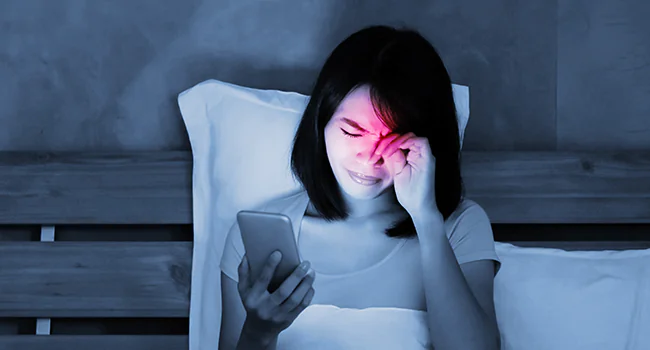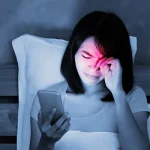Shingles is a painful, burning rash that appears throughout the body and sometimes on the face. The varicella-zoster virus causes it. The virus that causes chickenpox is the same one that promotes this. The virus lingers in your system after you’ve experienced chickenpox. It can reappear as shingles decades later.
The skin of the forehead and upper lid is usually affected by shingles around the eye. The nose’s sides or the nose’s point can also be affected. The virus can lay inactive for years until it is awakened by stress or a compromised immune system. At this point, it travels down nerve connections to the skin, usually affecting only one side of the face.
The rash occurs in and outside the eye in about 10 to 20 percent of persons with shingles. Ophthalmic herpes zoster, also known as herpes zoster ophthalmicus, is a kind of shingles that affects the eyes. Bruising, loss of vision, and other long-term issues can result from shingles in the eye. If you’re over 50, you can avoid shingles of the eye and its consequences by being immunized.
What Causes Shingles In The Eye?
The varicella-zoster virus, which causes chickenpox, is found in the nerves of persons who’ve had the disease. When it enters the eye, it becomes herpes zoster ophthalmicus, causing significant pain and the well-known rash that arises with shingles on other body parts.
The shingles virus does not usually initiate in those who have had chickenpox. When this happens due to stress or a compromised immune system, the shingles rash typically emerges on the back, ribs, and chest. It can also appear in other places, such as the face or the legs.
The cause of shingles is unknown. However, as you become older, your immunity to illnesses may deteriorate. Shingles is more prevalent in adults and those with compromised immune systems.
Varicella-zoster belongs to the herpes virus family, which also contains the viruses that cause the common cold and genital herpes. As a result, shingles is sometimes called herpes zoster. However, the virus that causes chickenpox and shingles isn’t the same as that causes cold sores or sexually transmitted genital herpes.
What Are The Symptoms Associated with Shingles?
Shingles, also known as herpes zoster, can cause a variety of symptoms. The first is frequent pain. Shingles’ pain might vary depending on the individual. Some feel a sluggish throbbing sensation, whereas others feel an intense stabbing or burning sensation. The discomfort may be permanent or intermittent.
A rash, which commonly appears as small blisters, is another classic condition. These can be irritating and painful. The rash typically occurs in bands across the torso but can also affect the face.
Now, if we talk about shingles in the eye, Herpes zoster ophthalmicus is a clinical name for shingles in the eye.
The following are indications of shingles in the eye:
- Scorching on one side of the face on the upper eyelid and forehead
- Swelling and redness around the eyelids
- Irritation, itching, and watering of the eyes
- Light hypersensitivity
- Eyesight problems
A person may suffer the following symptoms around the eye:
- A scorching sensation
- A rash or redness
- Sensitive skin
These symptoms can be indicative of shingles, but they can also be indicative of other eye disorders. Anyone experiencing any of these signs should seek professional care immediately. Eye shingles can lead to severe problems such as corneal ulceration, inflammation, and glaucoma.
How Do You Treat Shingles In The Eye?
Anyone with shingles in their eye must go to urgent care or see their primary care physician or eye doctor as quickly as possible. Eye shingles can result in visual loss.
To receive a determination, a doctor must only undertake a medical assessment. They may also send a specimen of blister fluid for examination. The results will reveal whether it carries the shingles virus. The doctor will prescribe an antiviral drug after verifying the diagnosis of shingles.
Antivirals like acyclovir, famciclovir, and valacyclovir work well for shingles. These drugs prevent the virus from replicating, speed up the healing of shingles blisters, and relieve nerve discomfort caused by the rash.
Start taking antiviral medicine three days after you develop symptoms for the best effect. Most people make a full recovery from shingles if they are treated quickly. You can also take over-the-counter pain relievers like acetaminophen or non-steroidal anti-inflammatory medicines throughout this time (NSAIDs).
Your doctor may prescribe extra shingles medications if the rash extends to your eye. They may give steroid eye drops or medications to treat your condition. If shingles in your eye is not treated correctly, it can lead to more severe complications that interfere with your daily life.
If you experience postherpetic neuralgia, your doctor may give pain relievers or antidepressants. A cold bath or shower may help relieve the nerve discomfort associated with shingles when it comes to homemade therapies.
How Can You Prevent Ophthalmic Shingles?
If you had chickenpox as a youngster, you’re more likely to get shingles. While shingles symptoms can occur in teenagers and young adults, they are more common in adults over 50.
The shingles vaccine can help you prevent contracting the condition. Although the Centers for Disease Control and Prevention suggests it for persons aged 60 and up, the United States Food and Drug Administration has licensed a vaccination for adults aged 50 and up.
Inquire with your doctor about when you should be vaccinated. According to studies, the vaccine can reduce your chances of acquiring shingles by more than 50% and your chances of long-term nerve injury by more than 66 %.
If you acquire shingles, try to avoid those who have never had chickenpox. This is particularly critical during the infectious period when your skin is covered with blisters. The varicella-zoster virus can be caught by someone who never had chickenpox, but they will have chickenpox rather than shingles.
To avoid contracting the disease, keep your rash covered and avoid touching your eye. While touching other regions of your body after coming into contact with the rash would not necessarily transmit it, you should make every effort to keep it isolated. When you must contact the rash, avoid rubbing it and wash your hands.
If you already have shingles, you can’t predict where the blisters will emerge. It may not extend if you approach your eye, but it may reach your eye based on where it goes along your nerves.
Why CFS?
Centre for Sight is the leading eye care chain in India, and our ophthalmologists and other physicians can help you with your eye care needs. If you have noticed that your vision is not the same, make an appointment right away!
Article: Shingles In The Eye
Author: CFS Editorial Team | Jun 13 2022 | UPDATED 02:00 IST
*The views expressed here are solely those of the author in his private capacity and do not in any way represent the views of Centre for Sight.





